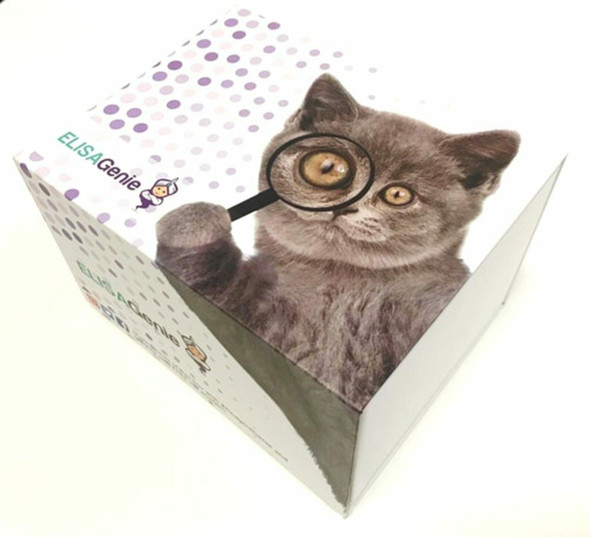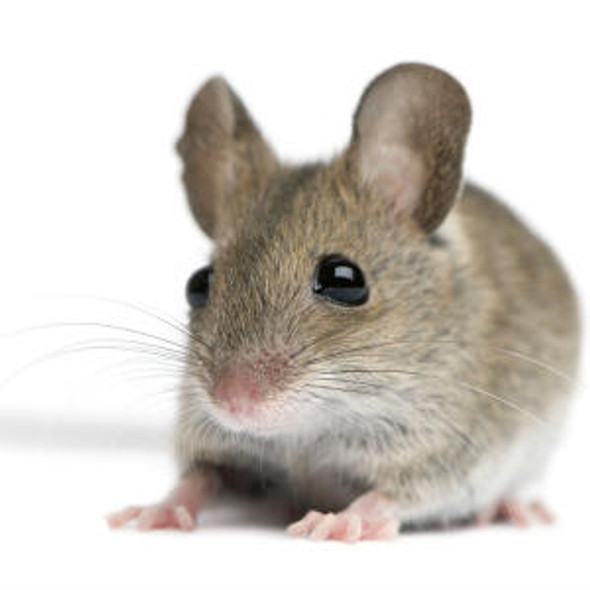Human Cardiovascular ELISA Kits
Human HRG (Histidine Rich Glycoprotein) CLIA Kit (HUES00302)
- SKU:
- HUES00302
- Product Type:
- ELISA Kit
- ELISA Type:
- CLIA Kit
- Size:
- 96 Assays
- Sensitivity:
- 18.75pg/mL
- Range:
- 31.25-2000pg/mL
- ELISA Type:
- Sandwich
- Synonyms:
- HPRG, HRGP, THPH11
- Reactivity:
- Human
- Sample Type:
- Serum, plasma and other biological fluids
- Research Area:
- Cardiovascular
Description
| Assay type: | Sandwich |
| Format: | 96T |
| Assay time: | 4.5h |
| Reactivity: | Human |
| Detection method: | Chemiluminescence |
| Detection range: | 31.25-2000 pg/mL |
| Sensitivity: | 18.75 pg/mL |
| Sample volume: | 100µL |
| Sample type: | Serum, plasma and other biological fluids |
| Repeatability: | CV < 15% |
| Specificity: | This kit recognizes Human HRG in samples. No significant cross-reactivity or interference between Human HRG and analogues was observed. |
This kit uses Sandwich-CLIA as the method. The micro CLIA plate provided in this kit has been pre-coated with an antibody specific to Human HRG. Standards or samples are added to the appropriate micro CLIA plate wells and combined with the specific antibody. Then a biotinylated detection antibody specific for Human HRG and Avidin-Horseradish Peroxidase (HRP) conjugate are added to each micro plate well successively and incubated. Free components are washed away. The substrate solution is added to each well. Only those wells that contain Human HRG, biotinylated detection antibody and Avidin-HRP conjugate will appear fluorescence. The Relative light unit (RLU) value is measured spectrophotometrically by the Chemiluminescence immunoassay analyzer. The RLU value is positively associated with the concentration of Human HRG. The concentration of Human HRG in the samples can be calculated by comparing the RLU of the samples to the standard curve.
| UniProt Protein Function: | HRG: Plasma glycoprotein that binds a number of ligands such as heme, heparin, heparan sulfate, thrombospondin, plasminogen, and divalent metal ions. Binds heparin and heparin/glycosaminoglycans in a zinc-dependent manner. Binds heparan sulfate on the surface of liver, lung, kidney and heart endothelial cells. Binds to N-sulfated polysaccharide chains on the surface of liver endothelial cells. Inhibits rosette formation. Acts as an adapter protein and is implicated in regulating many processes such as immune complex and pathogen clearance, cell chemotaxis, cell adhesion, angiogenesis, coagulation and fibrinolysis. Mediates clearance of necrotic cells through enhancing the phagocytosis of necrotic cells in an heparan sulfate-dependent pathway. This process can be regulated by the presence of certain HRG ligands such as heparin and zinc ions. Binds to IgG subclasses of immunoglobins containing kappa and lambda light chains with different affinities regulating their clearance and inhibiting the formation of insoluble immune complexes. Tethers plasminogen to the cell surface. Binds T-cells and alters the cell morphology. Modulates angiogenesis by blocking the CD6-mediated antiangiongenic effect of thrombospondins, THBS1 and THBS2. Acts as a regulator of the vascular endothelial growth factor (VEGF) signaling pathway; inhibits endothelial cell motility by reducing VEGF-induced complex formation between PXN/paxillin and ILK/integrin-linked protein kinase and by promoting inhibition of VEGF-induced tyrosine phosphorylation of focal adhesion kinases and alpha-actinins in endothelial cells. Also plays a role in the regulation of tumor angiogenesis and tumor immune surveillance. Normalizes tumor vessels and promotes antitumor immunity by polarizing tumor-associated macrophages, leading to decreased tumor growth and metastasis. Defects in HRG are the cause of thrombophilia due to histidine-rich glycoprotein deficiency (THPH11). A hemostatic disorder characterized by a tendency to thrombosis. |
| UniProt Protein Details: | Protein type:Secreted; Secreted, signal peptide Chromosomal Location of Human Ortholog: 3q27 Cellular Component: plasma membrane; extracellular region Molecular Function:heparin binding; serine-type endopeptidase inhibitor activity; heparan sulfate proteoglycan binding; protein binding; zinc ion binding; metal ion binding; heme binding; immunoglobulin binding; cysteine protease inhibitor activity; receptor binding Biological Process: platelet activation; positive regulation of apoptosis; positive regulation of immune response to tumor cell; negative regulation of cell adhesion; negative regulation of blood vessel endothelial cell migration; chemotaxis; response to organic cyclic substance; negative regulation of cell proliferation; fibrinolysis; negative regulation of angiogenesis; negative regulation of fibrinolysis; platelet degranulation; positive regulation of focal adhesion formation; regulation of gene expression; regulation of actin cytoskeleton organization and biogenesis; regulation of blood coagulation; regulation of protein complex assembly; angiogenesis; negative regulation of cell growth; blood coagulation; regulation of peptidyl-tyrosine phosphorylation; defense response to fungus; negative regulation of cell adhesion mediated by integrin Disease: Thrombophilia Due To Histidine-rich Glycoprotein Deficiency |
| NCBI Summary: | This histidine-rich glycoprotein contains two cystatin-like domains and is located in plasma and platelets. The physiological function has not been determined but it is known that the protein binds heme, dyes and divalent metal ions. The encoded protein also has a peptide that displays antimicrobial activity against C. albicans, E. coli, S. aureus, P. aeruginosa, and E. faecalis. It can inhibit rosette formation and interacts with heparin, thrombospondin and plasminogen. Two of the protein's effects, the inhibition of fibrinolysis and the reduction of inhibition of coagulation, indicate a potential prothrombotic effect. Mutations in this gene lead to thrombophilia due to abnormal histidine-rich glycoprotein levels. [provided by RefSeq, Nov 2014] |
| UniProt Code: | P04196 |
| NCBI GenInfo Identifier: | 123523 |
| NCBI Gene ID: | 3273 |
| NCBI Accession: | P04196. 1 |
| UniProt Secondary Accession: | P04196,B9EK35, D3DNU7, |
| UniProt Related Accession: | P04196 |
| Molecular Weight: | 59,578 Da |
| NCBI Full Name: | Histidine-rich glycoprotein |
| NCBI Synonym Full Names: | histidine-rich glycoprotein |
| NCBI Official Symbol: | HRG |
| NCBI Official Synonym Symbols: | HPRG; HRGP; THPH11 |
| NCBI Protein Information: | histidine-rich glycoprotein; histidine-proline-rich glycoprotein |
| UniProt Protein Name: | Histidine-rich glycoprotein |
| UniProt Synonym Protein Names: | Histidine-proline-rich glycoprotein; HPRG |
| UniProt Gene Name: | HRG |
| UniProt Entry Name: | HRG_HUMAN |
As the RLU values of the standard curve may vary according to the conditions of the actual assay performance (e. g. operator, pipetting technique, washing technique or temperature effects), the operator should establish a standard curve for each test. Typical standard curve and data is provided below for reference only.
| Concentration (pg/mL) | RLU | Average | Corrected |
| 2000 | 51999 59443 | 55721 | 55693 |
| 1000 | 22546 25402 | 23974 | 23946 |
| 500 | 11975 10089 | 11032 | 11004 |
| 250 | 5234 5354 | 5294 | 5266 |
| 125 | 2728 2488 | 2608 | 2580 |
| 62.5 | 1364 1258 | 1311 | 1283 |
| 31.25 | 629 719 | 674 | 646 |
| 0 | 27 29 | 28 | -- |
Precision
Intra-assay Precision (Precision within an assay): 3 samples with low, mid range and high level Human HRG were tested 20 times on one plate, respectively.
Inter-assay Precision (Precision between assays): 3 samples with low, mid range and high level Human HRG were tested on 3 different plates, 20 replicates in each plate.
| Intra-assay Precision | Inter-assay Precision | |||||
| Sample | 1 | 2 | 3 | 1 | 2 | 3 |
| n | 20 | 20 | 20 | 20 | 20 | 20 |
| Mean (pg/mL) | 91.22 | 281.65 | 802.54 | 94.66 | 296.70 | 782.41 |
| Standard deviation | 10.75 | 28.53 | 65.97 | 10.79 | 24.39 | 56.88 |
| C V (%) | 11.78 | 10.13 | 8.22 | 11.40 | 8.22 | 7.27 |
Recovery
The recovery of Human HRG spiked at three different levels in samples throughout the range of the assay was evaluated in various matrices.
| Sample Type | Range (%) | Average Recovery (%) |
| Serum (n=5) | 96-111 | 104 |
| EDTA plasma (n=5) | 86-98 | 92 |
| Cell culture media (n=5) | 98-114 | 106 |
Linearity
Samples were spiked with high concentrations of Human HRG and diluted with Reference Standard & Sample Diluent to produce samples with values within the range of the assay.
| Serum (n=5) | EDTA plasma (n=5) | Cell culture media (n=5) | ||
| 1:2 | Range (%) | 96-107 | 87-100 | 89-99 |
| Average (%) | 101 | 94 | 94 | |
| 1:4 | Range (%) | 98-112 | 93-109 | 101-114 |
| Average (%) | 104 | 99 | 108 | |
| 1:8 | Range (%) | 98-112 | 104-118 | 103-119 |
| Average (%) | 103 | 110 | 109 | |
| 1:16 | Range (%) | 92-108 | 98-113 | 92-103 |
| Average (%) | 98 | 106 | 97 |
An unopened kit can be stored at 4°C for 1 month. If the kit is not used within 1 month, store the items separately according to the following conditions once the kit is received.
| Item | Specifications | Storage |
| Micro CLIA Plate(Dismountable) | 8 wells ×12 strips | -20°C, 6 months |
| Reference Standard | 2 vials | |
| Concentrated Biotinylated Detection Ab (100×) | 1 vial, 120 µL | |
| Concentrated HRP Conjugate (100×) | 1 vial, 120 µL | -20°C(shading light), 6 months |
| Reference Standard & Sample Diluent | 1 vial, 20 mL | 4°C, 6 months |
| Biotinylated Detection Ab Diluent | 1 vial, 14 mL | |
| HRP Conjugate Diluent | 1 vial, 14 mL | |
| Concentrated Wash Buffer (25×) | 1 vial, 30 mL | |
| Substrate Reagent A | 1 vial, 5 mL | 4°C (shading light) |
| Substrate Reagent B | 1 vial, 5 mL | 4°C (shading light) |
| Plate Sealer | 5 pieces | |
| Product Description | 1 copy | |
| Certificate of Analysis | 1 copy |
- Set standard, test sample and control (zero) wells on the pre-coated plate and record theirpositions. It is recommended to measure each standard and sample in duplicate. Note: addall solutions to the bottom of the plate wells while avoiding contact with the well walls. Ensuresolutions do not foam when adding to the wells.
- Aliquot 100µl of standard solutions into the standard wells.
- Add 100µl of Sample / Standard dilution buffer into the control (zero) well.
- Add 100µl of properly diluted sample (serum, plasma, tissue homogenates and otherbiological fluids. ) into test sample wells.
- Cover the plate with the sealer provided in the kit and incubate for 90 min at 37°C.
- Aspirate the liquid from each well, do not wash. Immediately add 100µL of BiotinylatedDetection Ab working solution to each well. Cover the plate with a plate seal and gently mix. Incubate for 1 hour at 37°C.
- Aspirate or decant the solution from the plate and add 350µL of wash buffer to each welland incubate for 1-2 minutes at room temperature. Aspirate the solution from each well andclap the plate on absorbent filter paper to dry. Repeat this process 3 times. Note: a microplatewasher can be used in this step and other wash steps.
- Add 100µL of HRP Conjugate working solution to each well. Cover with a plate seal andincubate for 30 min at 37°C.
- Aspirate or decant the solution from each well. Repeat the wash process for five times asconducted in step 7.
- Add 100µL of Substrate mixture solution to each well. Cover with a new plate seal andincubate for no more than 5 min at 37°C. Protect the plate from light.
- Determine the RLU value of each well immediately.






